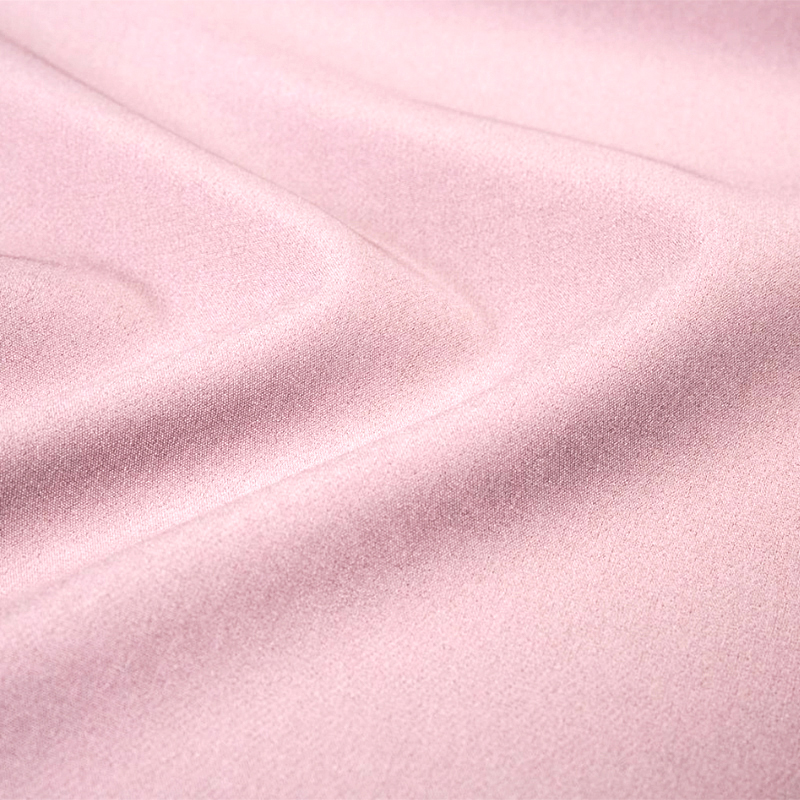The cut and construction of 4-way stretch clothing fabrics for specific sports undergo significant changes to meet the unique performance requirements and movement patterns associated with each sport. Tailoring these fabrics to the needs of athletes involves careful consideration of factors such as range of motion, support, breathability, moisture management, durability, and overall comfort.
Yoga:
Cut: Yoga involves a wide range of movements, including stretching, bending, and twisting. Four-way stretch fabrics for yoga apparel feature designs that prioritize freedom of movement and flexibility. This often includes garments with contoured seams, gussets, and strategic paneling to minimize restriction during poses.
Construction: Yoga fabrics are constructed with a focus on stretchability in all directions to accommodate the fluid movements of yoga practitioners. Seamless construction or flatlock seams are common to reduce chafing and enhance comfort during extended sessions. Moisture-wicking properties are integrated to keep the wearer dry and comfortable, especially in heated yoga practices.
Running:
Cut: Running involves repetitive movements and high-impact activities, requiring garments that provide support and stability while allowing for natural motion. Four-way stretch fabrics for running apparel are designed with ergonomic cuts and tailored fits to minimize excess fabric and prevent chafing. This includes features such as articulated knees, extended back hems, and reflective elements for visibility.
Construction: Running fabrics prioritize breathability and moisture management to regulate body temperature and keep the wearer cool and dry. Mesh panels or strategically placed ventilation zones are incorporated into the construction to enhance airflow. Compression elements may be integrated into the fabric to provide targeted support and reduce muscle fatigue during long-distance runs.
Cycling:
Cut: Cycling involves dynamic movements of the legs and torso, requiring apparel that offers support and aerodynamics without restricting mobility. Four-way stretch fabrics for cycling apparel feature anatomic cuts with pre-shaped panels to conform to the cyclist's body position while riding. This includes longer backs and higher fronts to ensure coverage in the cycling position.
Construction: Cycling fabrics prioritize durability and abrasion resistance to withstand prolonged use and friction from contact with the saddle. Flatlock seams or bonded seams are used to minimize irritation and chafing. Additionally, moisture-wicking properties are crucial to manage sweat and prevent discomfort during intense rides.
CrossFit:
Cut: CrossFit workouts combine various functional movements, including lifting, jumping, and gymnastics, necessitating apparel that offers support, flexibility, and durability. Four-way stretch fabrics for CrossFit apparel feature reinforced seams and strategically placed reinforcements in high-stress areas to withstand the demands of intense workouts.
Construction: CrossFit fabrics are engineered for performance and durability, often incorporating compression elements to support muscles and enhance recovery. Reinforced stitching and double-layered panels are common in key areas such as the knees, elbows, and shoulders to withstand the rigors of CrossFit movements. Breathable and moisture-wicking properties are essential to keep athletes comfortable during high-intensity workouts.

Swimming:
Cut: Swimming requires streamlined apparel that reduces drag in the water while providing freedom of movement. Four-way stretch fabrics for swimwear feature form-fitting designs with minimal seams to minimize resistance in the water. High-cut leg openings and racerback or high-neck designs are common for increased mobility.
Construction: Swimwear fabrics are constructed with chlorine-resistant materials that maintain their shape and color after exposure to pool chemicals. Bonded seams or flatlock stitching is used to reduce drag and provide a smooth surface for improved hydrodynamics. Quick-drying properties are essential for comfort both in and out of the water.
Gymnastics:
Cut: Gymnastics involves a wide range of dynamic movements, including flips, twists, and jumps, necessitating apparel that offers flexibility, support, and minimal interference. Four-way stretch fabrics for gymnastics apparel feature form-fitting designs with open backs, racerback styles, or sleeveless cuts to allow for unrestricted movement of the arms and shoulders.
Construction: Gymnastics fabrics are constructed with lightweight and breathable materials to enhance comfort during strenuous routines. Seamless construction or flatlock seams are used to minimize irritation and friction against the skin. Moisture-wicking properties are integrated to keep athletes dry and comfortable during performances.





.jpg?imageView2/2/format/jp2)





